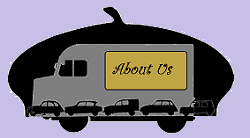THE HOME OF 2CVGB AND CITROEN CAR CLUB HVAN REGISTER
Hy all,
I'm Martyn Brown and this website is designed with you and your H Van in mind, we encourage you to use the website as it is intended. Send in your pictures and write about your experiences. Use the forum to ask other members anything to do with H Vans. Send me an email if you have parts you want to sell or parts you need to keep your van going, then I can add it to the For sale and Wanted page. To view the site you must register your van. To register your van click on the" register your van" van and fill out the form, then I can give you a login so you can then enjoy the rest of the site.
Tube it don't lose it.

Here's a little history about the H Van,
The Citroën H Vans

After the war, France needed a van to get its goods moving again and Citroën had been preparing for this since 1943 using the lessons drawn from the TUB.
The basic design idea was to provide a "walk through" interior with a low loading floor, easy access from the side through a sliding door and a wide, versatile rear entry. Citroën were already using monocoque construction in the Traction Avant and used this for the Type H, so there is no separate chassis. Many parts were borrowed from the Traction among them the engine, the front hubs and even the doorhandles! In fact, depending on year, parts were used from all the range including 2CV, Ami, and DS. I can assure you, however, that if you need something for an H it will inevitably prove to be unique to it - such is life!
M. Franchiset, who had worked for Citroën since 1922, designed the body. He invented the lightweight corrugated panels and the pinless 'clasp hands' type hinges for the doors and all removable panels (just the same as on the 2CV). It also featured a front sub frame which carries all the mechanical parts, engine, gearbox, transmission,suspension, steering-everything; it is held by just four (big!) bolts. With all the weight saving there is enough power from the 1628cc or 1911cc engine to provide a load capacity between 850 and 1600kg, dependent on model.
Over the years, until production stopped in 1981, there was some detail change. You could get a diesel engine, longer wheelbase, rear overhang or extra height. Standard production included van (fourgon), 'beast carrier' (betaillere) and pick up (plateau). If you wanted something different, several coachbuilders could provide it, e.g.minibuses, fire engines or mobile laboratories. Most impressive were the purpose built promotional advertising vehicles; sadly these, by their very nature, had short lives and few survive.
The H van makes an ideal camper, and that is one reason they are increasingly popular today. With standing height for all but the tallest, enough width to sleep across if you are short (lengthways otherwise), it does away with the pegging down and bending down of camping and that is a bonus as you get older! Plus, of course, whilst it can (and does!) leak, you do have an advantage in the average monsoon! You should know, however, that parts may be quite expensive.
So what is it like to drive? First you climb up into a seat which is higher than any other van. The view is wonderful! You can see over all the fences and hedges and spot all the things you didn't know were there. This has the added advantage of seeing when the cars in front are stopping and will allow you to start slowing in good time, as even with the brakes in good order they are only 'adequate'. The engine starts easily with a short stab at the red button and idles smoothly. First and second gears are soon finished with using the long shift and the motor pulls well from low speed in top. Steering is light and accurate once moving, and the handling is excellent - just watch you don't hurl the crockery off the shelf! Top speed is about 100kph, but motorway cruising is usually in the range 75-95kph.


